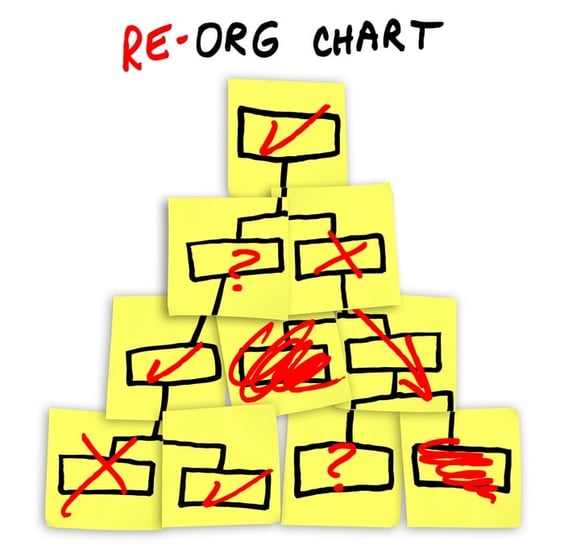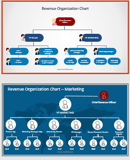aka How Valuable is a CRO?
Unlike a more narrowly focused Chief Sales Officer or Chief Marketing Officer, a Chief Revenue Officer (CRO) is responsible for the entire array of revenue-driving activities – scaling revenue, overseeing sales and marketing teams, managing partner relationships, ensuring client success throughout the buyer’s journey, and maintaining brand integrity. As an organization grows, the need for a CRO often becomes more evident.

Some companies decide to onboard a CRO to better align burgeoning sales and marketing teams around a singular business goal, while others choose to bring in a CRO to bolster channel expansion efforts. Either way, a CRO will oversee the business processes and staff that accompany the end-to-end revenue value chain.
However, creating a CRO role is a decision that companies of all sizes face with trepidation. Smaller businesses may wrestle with whether a CRO can achieve the rapid growth they are seeking, while larger companies may struggle to identify where a CRO will fit into the organizational structure and how existing leadership may respond.
Understanding the barriers that can exist in an organization helps to inform the decision of whether a CRO will benefit an organization’s bottom-line, as well as mitigate brand risk. The increased demands put on a CRO who is working in an environment of resistance can stymie success, which means that before implementing a CRO role there are barriers to overcome.
Barriers
Need Recognition
The most salient challenge to carving out a CRO role is demonstrating the need for the position.
While many organizations are cost-resistant in general, the main argument against creating a CRO is rooted in a lack of understanding around the position. Even C-Suite executives can struggle with recognizing the need for a CRO. Existing leadership may view a CRO as superfluous because the role is comprised of pieces from more-established positions like that of a CEO, CFO, CSO, or CMO. When upper management does not comprehend why a CRO is necessary, that sentiment will trickle down through the organization and breed discontent and frustration at all levels. Therefore, for a CRO position to make sense, it must be well-articulated and differ substantially from pre-existing roles.
Similarly, when C-Suite executives and hiring personnel cannot directly connect a CRO’s responsibilities with revenue-growth activities, the need for a CRO role will not be recognized. Therefore, the challenge is to prove that a CRO can both create additional opportunities and improve the efficiency of existing opportunities to increase profitable revenue. Calculating a CRO’s estimated effect on the bottom-line is often enough to justify the hefty cost of bringing one into the fold.
Even in instances where employees are familiar with a CRO’s capabilities and view the position positively, they may not perceive it as vital to the organization’s immediate success. A company’s current lifecycle stage or growth rate can also color its perception of whether it needs a CRO. A forward-thinking mentality is required to make a shrewd business decision for the future health of the company.
Executive Resistance
In many organizations the decision to expand the leadership team can result in resistance that distracts from smooth day-to-day operations and hinders growth plans.
Appointing a CRO to own revenue results can step on the toes of existing sales and marketing VPs as well as the CFO. Carving out a CRO role may be perceived as a lose-lose situation for other C-Suite execs because job functions will either be taken from them to flesh out the new role, or they will be overlooked for exciting new resume-building responsibilities. Essentially, they may feel that either a piece of their pie will be taken, or they will be denied a seat at the table with a fresh new pie. The response is often less than gracious.
Relinquishing control is a concept that many Type A personalities, especially those found in high-powered leadership roles, struggle with immensely. Because, as a quote from a popular television sitcom reminds us “Relinquish is just a fancy word for lose.” Existing leadership may try to block the hiring of a CRO or refuse to work with the individual once he/she has been onboarded. Behaviors ranging from tacit passive-aggressiveness to outspoken repudiation can follow – tearing the cohesiveness of the leadership team apart. Politics and power struggles often ensue, ruining the balance required for a healthy corporate culture.
These hypotheticals are enough to make any CEO question whether it is worth it to hire a CRO. The underlying question is whether or not the existing leadership team has the expertise and can provide the process, tools, and inspiration to drive dramatic, profitable revenue growth for the organization.
Restructuring
Once they decide to carve out space for a CRO, the question remains – where will the CRO go? This problem arises any time a new title is added, whether it is a CRO, CXO, senior VP, or Director. Restructuring the organization to accommodate the position can become the elephant in the room. Everyone may agree that bringing on a CRO is the right decision but changing the organizational structure may cause discontent to ripple through affected teams or departments.
Will the CRO report to the CFO because revenue is only one component of the overall financial picture of a company? Will the CMO report to the CRO because sales, marketing, and customer success departments must all be unified by an individual who is solely devoted to growth? Or will the two be on equal footing?
In addition to altering reporting hierarchy, the placement of a CRO will dictate what the individual in the role will be responsible for and which metrics he/she will own. Clearly defining the role within the organizational chart helps to foster collaboration and avoid overlaps, which are both frustrating and costly.

Candidate Profile
The final barrier to hiring a CRO is the candidate him/herself. Finding the right individual to lead the company’s revenue growth requires an alignment of previous experience, current goals, passion, availability, salary/benefits demands, and vision for the role. The CEO needs to know that he/she can work closely with whoever is hired into the CRO role and depend on him/her to create the revenue results that enable the CEO to achieve their vision for the business. While the interview process should be able to vet candidates effectively, there is still substantial brand risk any time someone is brought into a high-profile role.
Considerations
Understanding the challenges associated with developing the CRO position aids in determining whether an organization will benefit enough from adding the position that the rewards will outweigh the risks.
A CRO can specifically help a company flourish in situations where there is:
- Lackluster revenue expansion or plateauing growth
- Costly, ongoing infighting between sales and marketing teams
- A need for ownership over the entire customer lifecycle
- An emphasis on growth to secure financing or increase a company’s value
- Demanding R&D needs and product rollout schedules
- The need to integrate predictive modeling, marketing automation, and cross-channel attribution
- A desire to take a private company public
- Ineffective market positioning and product pricing
- A lack of alignment between the sales, marketing and customer success teams with operations, administration, and finance
- A CEO with an outstanding corporate vision and masterful technical expertise, without sales and marketing experience
If the CEO determines the benefits outweigh the costs, they must determine the best way to develop, integrate and communicate the new position. An internal culture that promotes collaboration, inclusiveness, and transparency will generate the best results for all concerned.
Additional Related Articles
What is a Chief Revenue Officer?
How to Create a Chief Revenue Officer Role
CFO vs CRO – The Differences Explained
Additional Free Resource:
Revenue Management Organizational Chart- Free PowerPoint Template -
The PowerPoint includes editable organizational charts with a Chief Revenue Officer in place. You will find a variety of scenarios to begin the process of positioning your team with a focus on aligning revenue teams and activities. Get access to the free org chart templates here >

